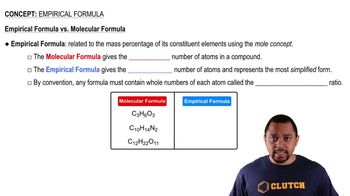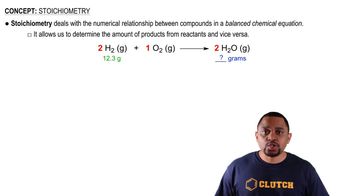Here are the essential concepts you must grasp in order to answer the question correctly.
Combustion Analysis
Combustion analysis is a technique used to determine the elemental composition of organic compounds. In this process, a sample is burned in excess oxygen, producing carbon dioxide and water. The masses of these products are measured, allowing for the calculation of the amounts of carbon and hydrogen in the original sample, which are essential for determining the empirical formula.
Recommended video:
Combustion of Non-Hydrocarbons
Empirical Formula
The empirical formula of a compound represents the simplest whole-number ratio of the elements present in that compound. It is derived from the moles of each element calculated from the combustion analysis data. This formula provides insight into the basic composition of the substance, although it may not reflect the actual molecular structure.
Recommended video:
Empirical vs Molecular Formula
Stoichiometry
Stoichiometry is the branch of chemistry that deals with the quantitative relationships between the reactants and products in chemical reactions. It involves using balanced chemical equations to calculate the amounts of substances consumed and produced. In the context of combustion analysis, stoichiometry helps convert the masses of CO2 and H2O produced into moles of carbon and hydrogen, which are crucial for determining the empirical formula.
Recommended video:



